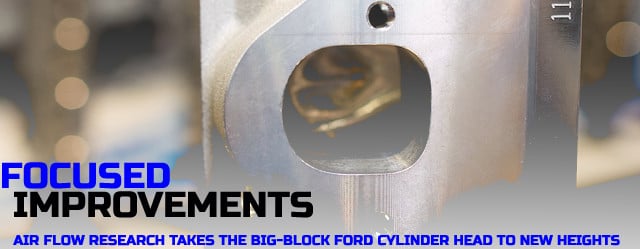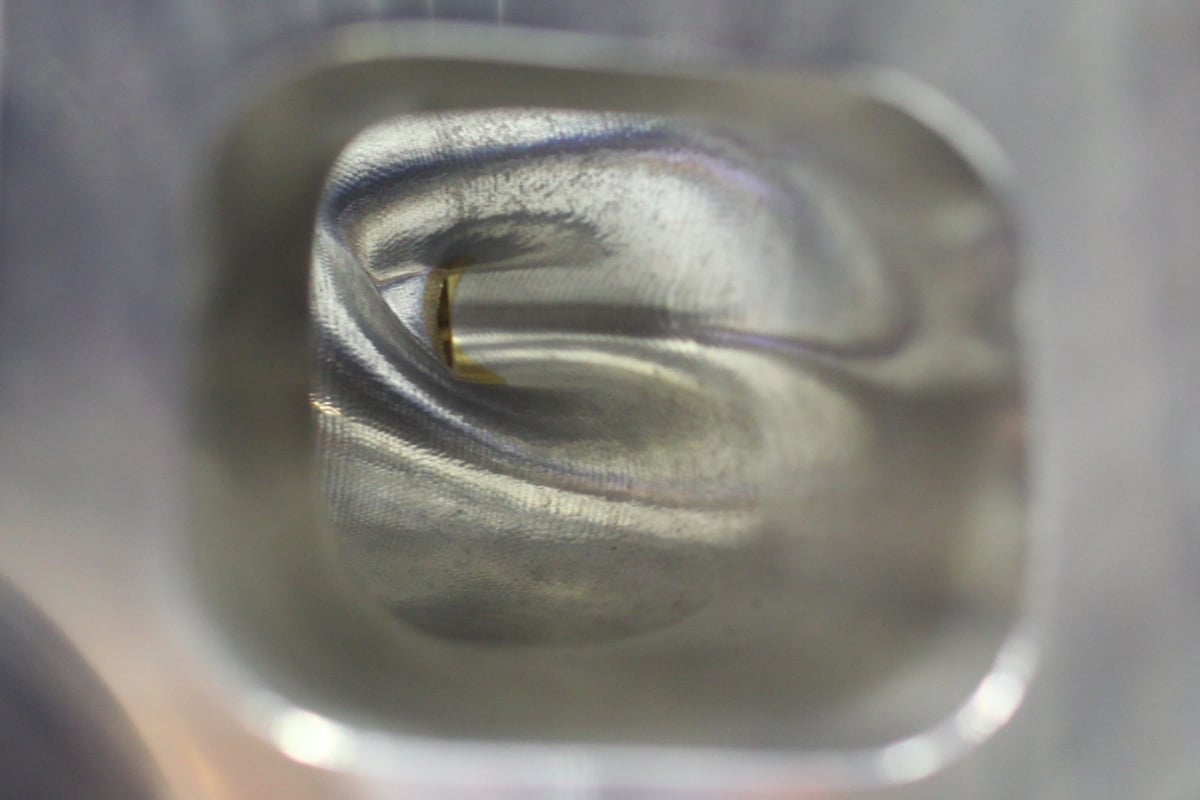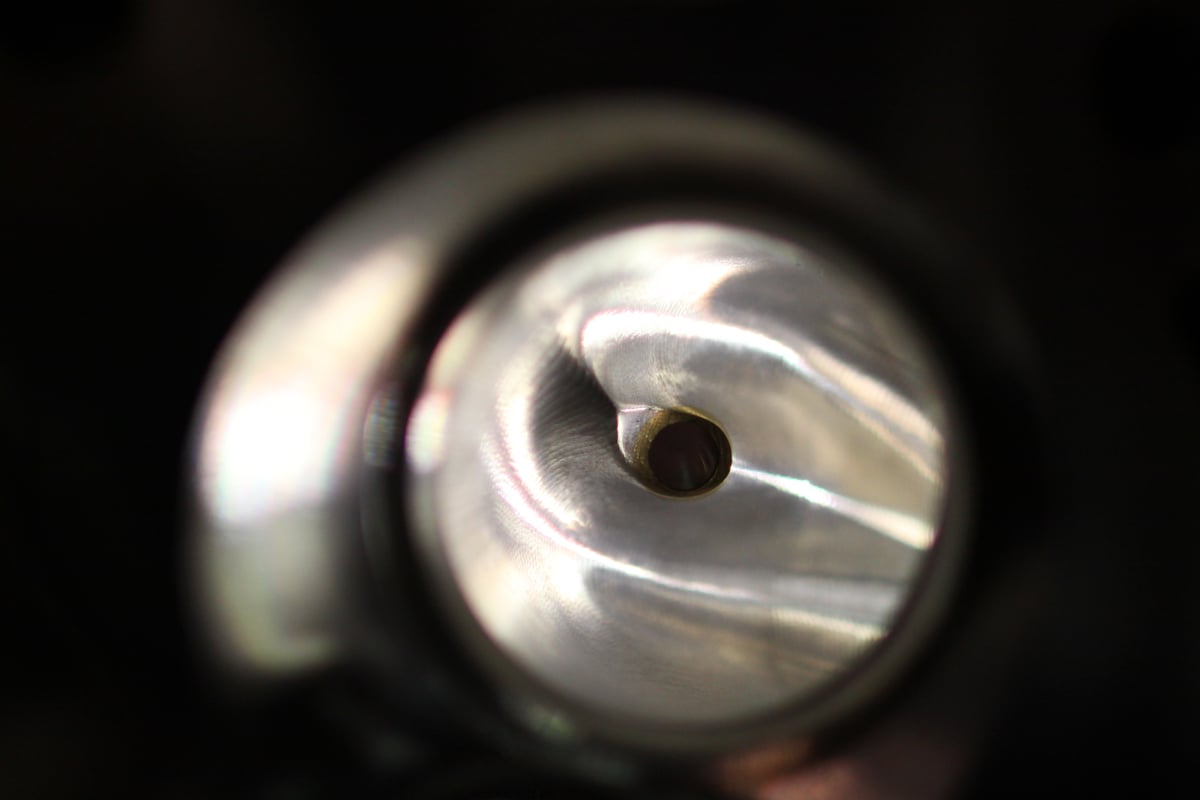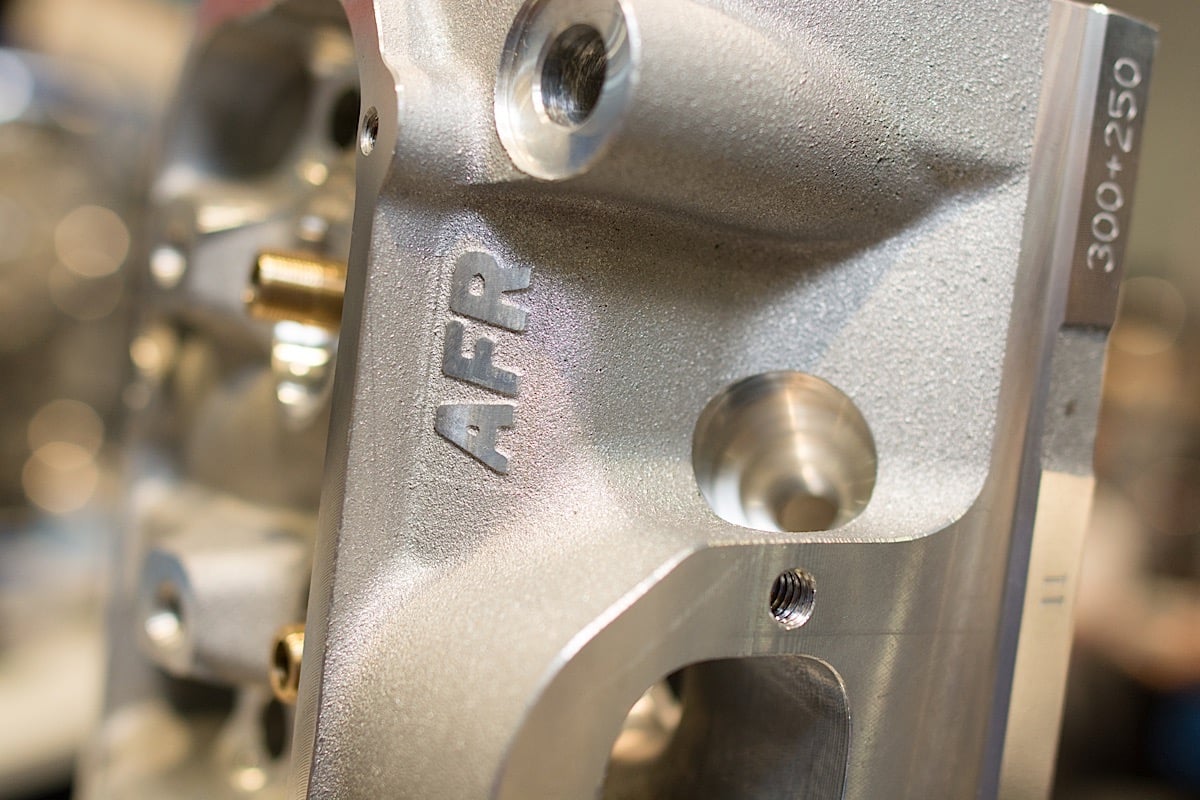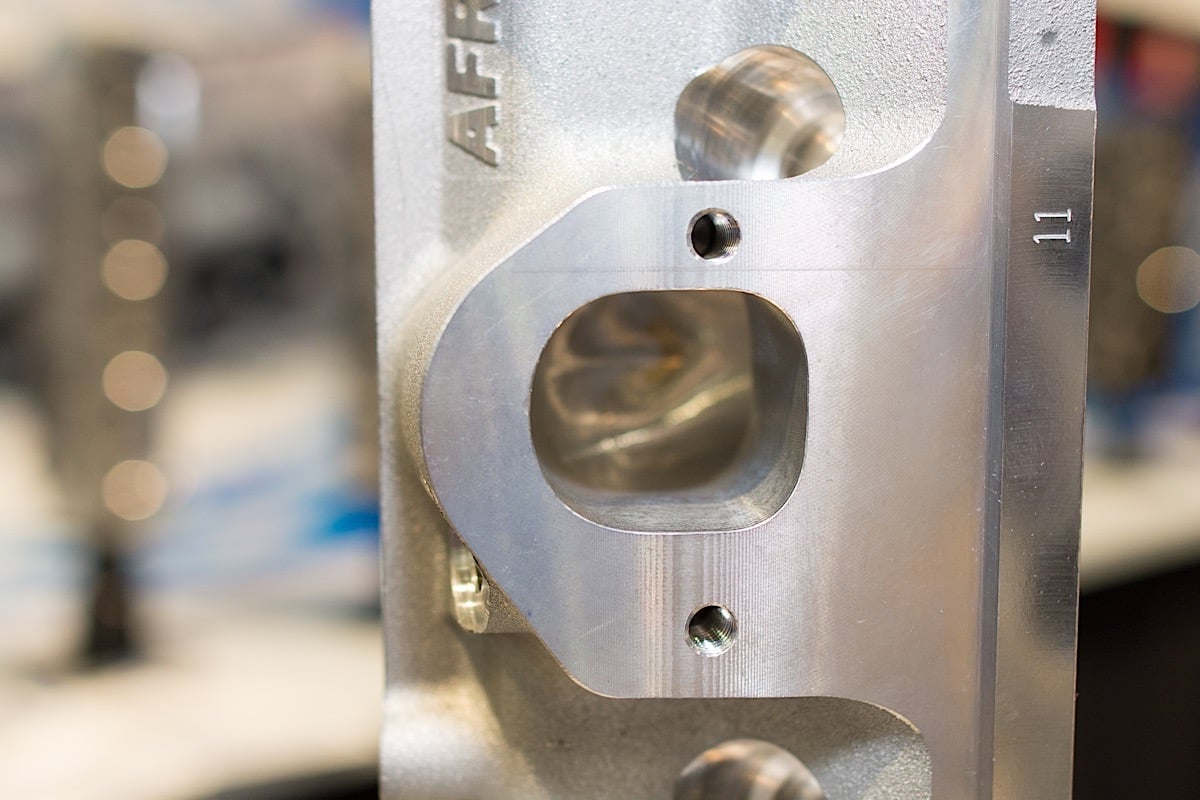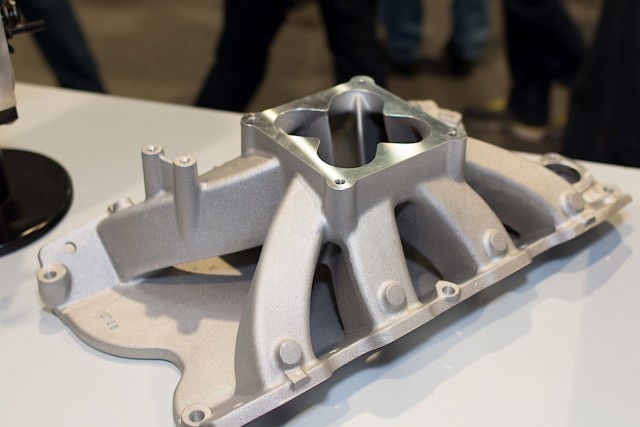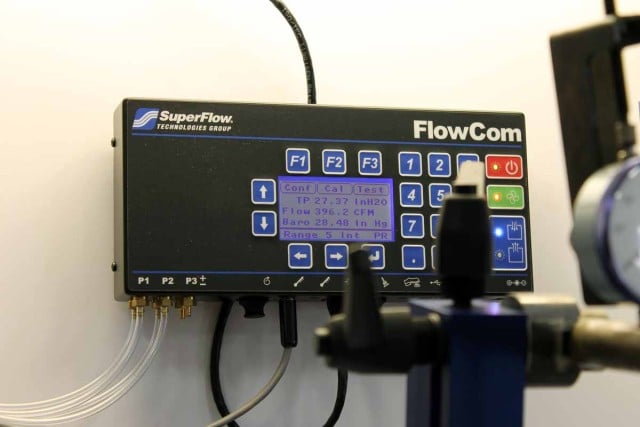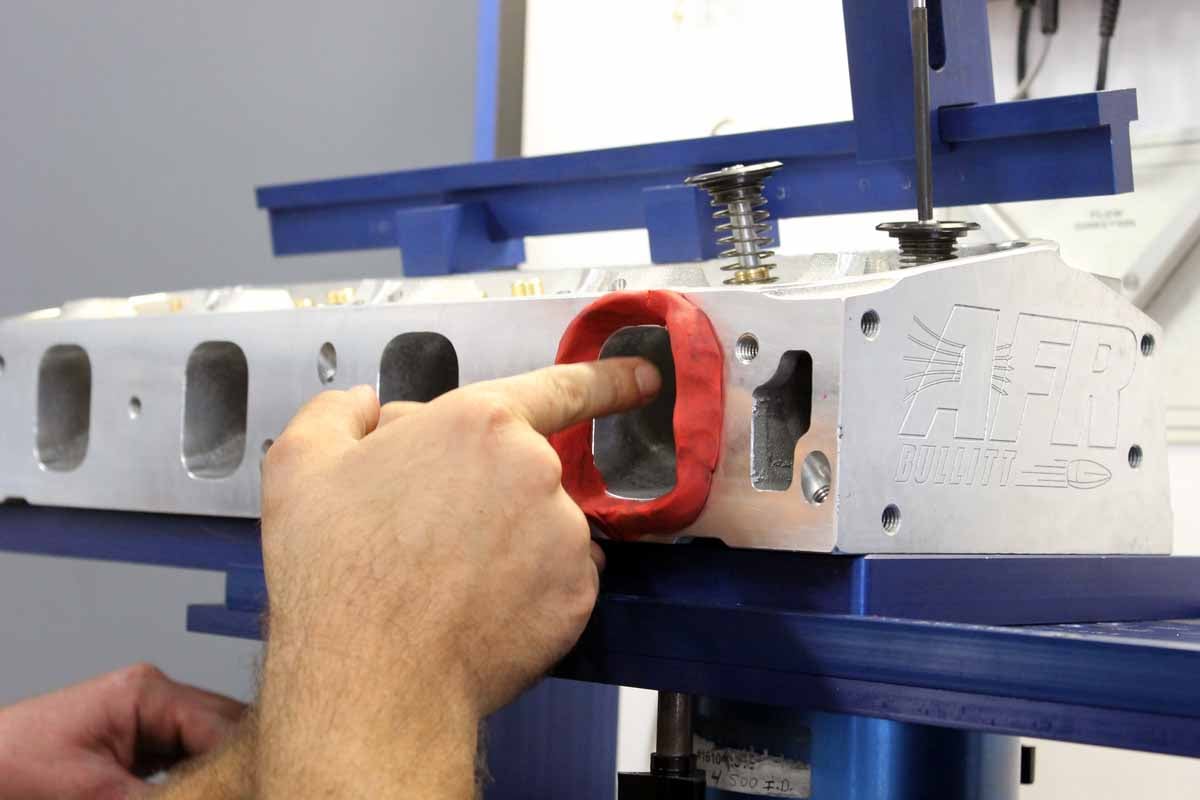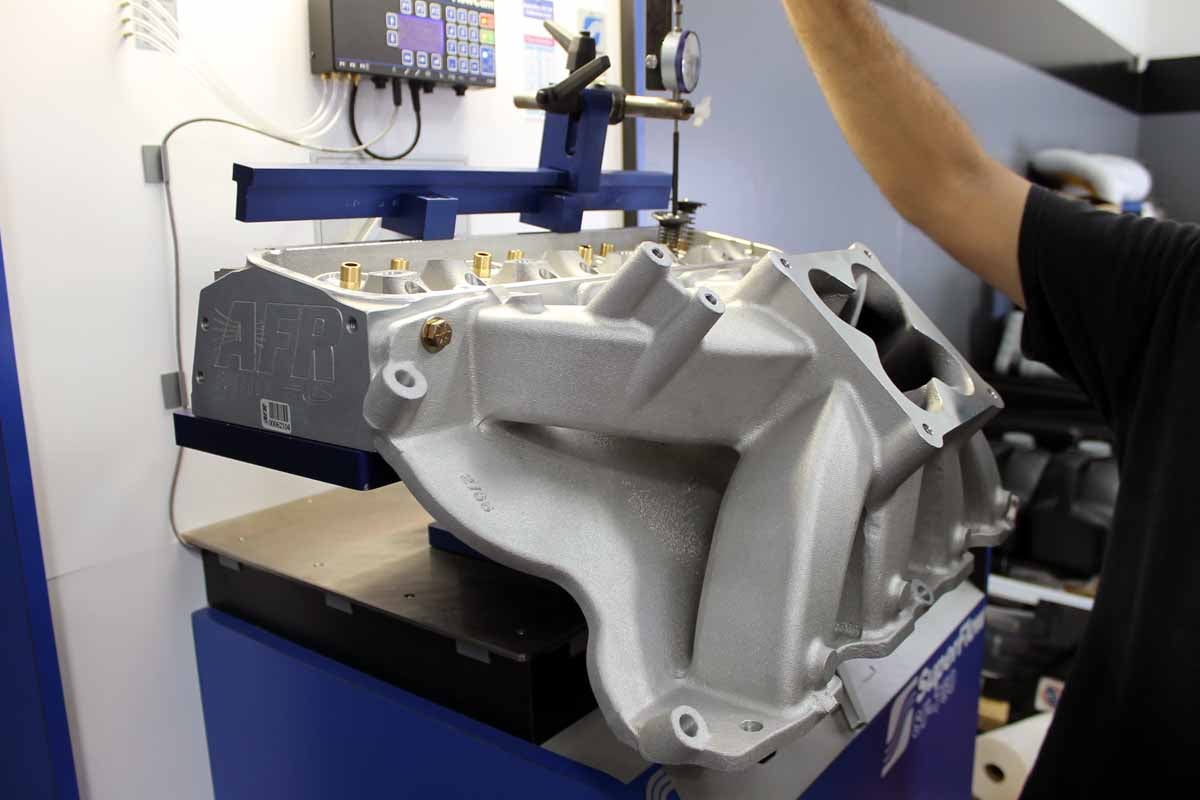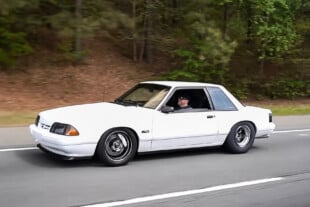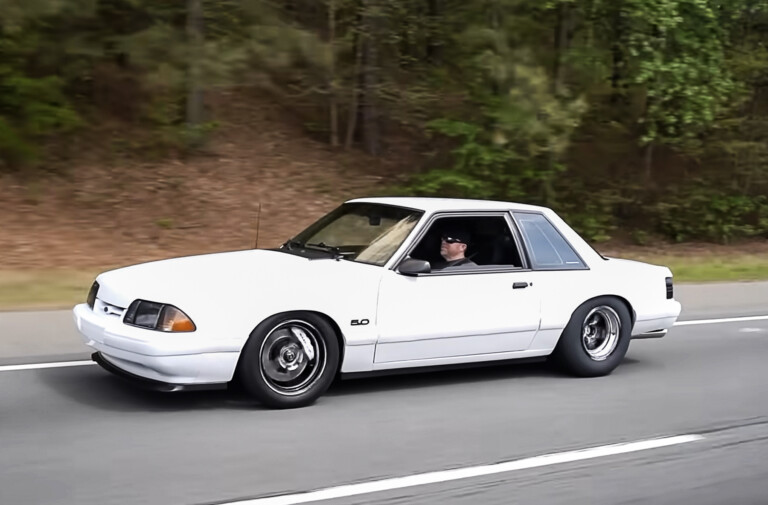Changing the status quo when it comes to performance engine parts is not always an easy task, but that’s exactly what Air Flow Research set out to do when they began the development process on the new Bullitt lineup of cylinder heads for the big-block Ford platform.
The company set their sights on two leading competitors’ cylinder heads as a benchmark for improvement, as many enthusiasts are currently running these configurations. The decision was made to develop a complete line of castings to appeal to everyone from the show-car enthusiast looking for a bit more power to the racer who’s laying it on the line every weekend at the dragstrip.
There are a number of improvements that have been baked into the Bullitt’s design, from optimized port designs to altered valve locations, and the results are impressive. In AFR’s own testing, the new design also yielded an excellent horsepower gain on a test engine. Let’s take a walk through all of the details and available options for the different levels of Bullitt cylinder heads.
There are three different basic cylinder heads in the Bullitt lineup – featuring 270cc, 285cc, and 300cc intake runners – with stock location exhaust ports on the 270cc head, and the customer’s choice of stock or .250-inch raised exhaust ports on the 285cc and 300cc versions.
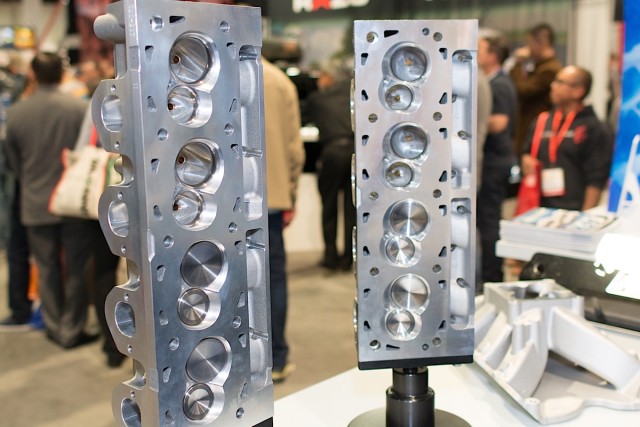
Three different versions of the Bullitt cylinder head are designed to cater to a wide range of enthusiasts and racers.
Why The Improved Design?
Simply put, refining the big-block Ford architecture with modern design and flow techniques from their R&D department, AFR provides improvements previously not realized when the original BBF architecture was conceived.
“There were three areas that we really focused on improving over the competitor’s cylinder heads,” says AFR’s Director of Marketing, Tim Torrecarion. “Number one was the relatively poor port design, second was to unshroud the valves for improved airflow, and third, create a more consistent cross-sectional area.”
Placing the intake valve in the correct location to unshroud the valve was a main focus of the Bullitt's design process. AFR also redesigned the intake port to have a semi-rectangular shape to boost airflow into the cylinder.
Cross-sectional area consistency is perhaps the most interesting focal point, as Torrecarion explains.
“We spent a large amount of time designing the ports on these new heads. Examining the shortcomings of the big-block Ford, we decided to go with a new shape that is not only smaller but also has less volume, resulting in a more efficient design. Don’t be fooled though, our smallest head (270cc) flows close to 400 cfm at .650-inch of lift.”
“Another limiting factor of the factory and Cobra Jet designs is the arduous path the exhaust has to travel, by filling the floor and retaining the stock location we are able to improve the high lift flow and increase the low and mid lift numbers. With this new design we were able to achieve up to a 75-percent intake to exhaust flow ratio, and things only get better when you start looking at our larger heads.”
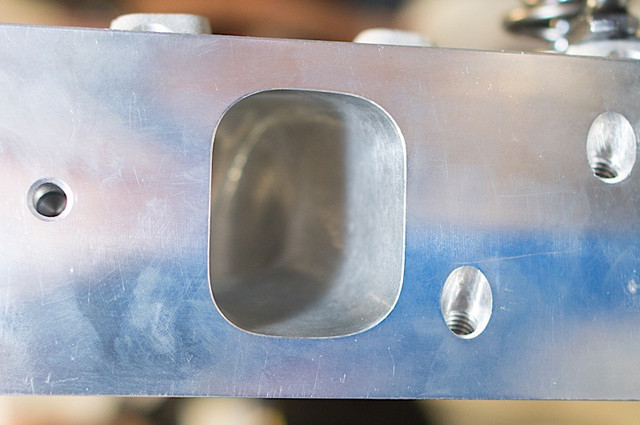
Emphasis was also placed on raising the intake port floor location to improve its performance over competitor’s designs.
Although the appearance of the AFR product may be smaller visually, the smooth transitions from port entry to exit make the most difference in airflow efficiency.
Port design is critical – the typical large egg-shaped BBF intake port is gone, replaced with the more efficient semi-rectangular port and valves that have been positioned closer to the bore center to take advantage of their large circumference. The intake port floor was raised substantially over stock designs, which improves the angle the air must take on its way to the intake valve and into the cylinder.
Increasing the flow in these areas was important to us – mid-lift, you’re going to be at that point twice, whereas you’re only hitting max-lift once. Improving the performance under the curve was critical. – Tim Torrecarion, Air Flow Research
Repositioning the exhaust valves within the port also led to large improvements in performance. Over the years, the Cobra Jet style and other designs have been criticized for exhaust valve angles that were too close to the outer cylinder wall, which hurts performance due to shrouding.
For street cars, cylinder head efficiency – especially in the low and mid-lift camshaft areas – is where the enthusiast is going to notice the greatest difference in performance, and that was also a focus of the design process.
“Increasing the flow in these areas was important to us – mid-lift, you’re going to be at that point twice, whereas you’re only hitting max-lift once. Improving the performance under the curve was critical,” says Torrecarion. “This is one of the reasons we have the three different intake runner sizes in our lineup. For the race build with a narrower powerband, we have one set, and for the street guy we have the smaller head, then there’s the guy in the middle. We all want the race car, but drivability goes a long way when the car sees considerable time on the street.”
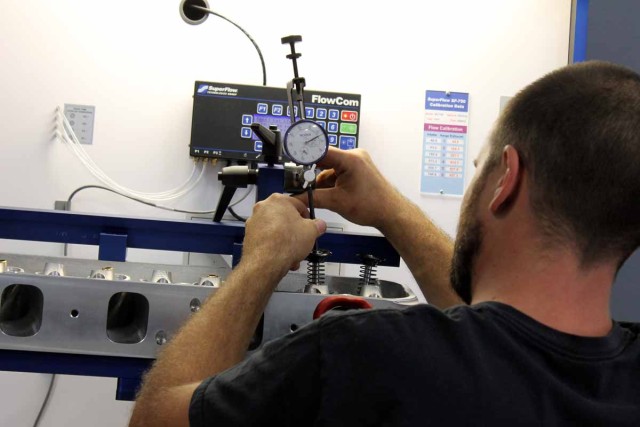
The 300 cc versions of the Bullitt heads found their way onto Power Automedia’s Superflow flowbench, where they exceeded the published figures from Air Flow Research.
The Product Rundown
All versions of the BBF Bullitt heads are offered fully assembled, available with solid roller or hydraulic roller valve springs. The three different runner size options present the customer with the ability to run the heads on anything from a street/strip car to a competition drag race engine. A five-angle valve job is standard on all three levels of the Bullitt.
The 300cc Bullitt cylinder heads used in our testing are constructed from A356 virgin aluminum alloy, as are all of AFR’s offerings. Torrecarion says that they’re best suited for use on large-displacement, high-RPM big-block Ford engines.
The 300cc Bullitt cylinder head also offers 100-percent CNC-ported intake and exhaust runners along with fully CNC-ported combustion chambers. Our heads were delivered complete with 2.300-inch intake valves and 1.760-inch exhaust valves, a set of PAC Racing 1.625-inch OD solid-roller-spec dual valve springs offering 275 pounds of seat pressure that are capable of .850-inch lift, and 10-degree Manley steel retainers and spring cups.
(Left) AFR's typical robust construction methods can be found throughout the product. (Right) The 285cc and 300cc versions of the Bullitt are available with .250-inch raised exhaust ports.
ARP 7/16-inch rocker studs are standard, along with adjustable 3/8-inch-thick adjustable guide plates and 11/32-inch Viton valve seals. Bronze valve guides are also standard, and there’s an option for a set of springs to accommodate a hydraulic roller camshaft as well – these just need to be spec’d out when ordering. These ancillary parts – the ARP rocker studs, adjustable guide plates, and the like – are standard on all versions of the Bullitt heads.
The intake ports are the as-mentioned 300cc, while exhaust port volume checks in at 142cc. The standard exhaust ports on the 300cc head are raised .250-inch to help maximize exhaust flow. Valve angles are 14 degrees for the intake side and 8 degrees for the exhaust. The deck thickness checks in at .750-inch for improved stability and gasket retention.
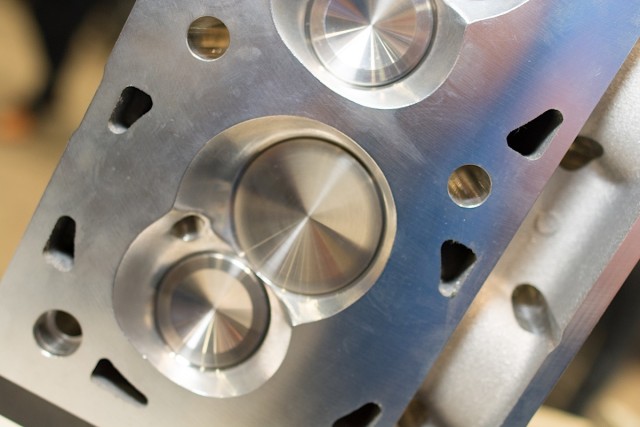
The .750-inch-thick deck provides plenty of stability to ensure gasket retention under demanding conditions. Stainless valves and a choice of solid-roller or hydraulic-roller springs are available — see the part number chart above.
Complete Induction Solution
The similarities of the big-block Ford platform to the big-block Chevrolet didn’t escape the AFR engineers during the product design stages of this induction package. In order to maximize the cylinder head’s potential, the team embarked on a quest to develop a matching intake manifold to simplify the purchase process for the customer – and provide the best possible induction system for the big-block Ford.
The manifold design borrows heavily from the port design of the company’s BBC rectangular-port cylinder heads (which are similar to the BBF heads) and allows the company to provide a complete solution for performance improvement.
Two different spring packages are available to provide the customer the ability to run a solid or hydraulic-roller camshaft with the 285 cc Bullitt heads.
The 270cc “Partial Port” CNC head features an 80 percent CNC intake and exhaust bowl blend with 50 percent CNC-machined chambers. This is the budget-friendly alternative to a 100 percent CNC ported head, while still providing ample airflow and performance for customers at this performance level. These are designed for mild street/strip engines up to 477 cubic inches and a max 6,200 rpm level on top of a 4.360-inch or larger bore.
Intake valve sizes on the 270cc head are reduced accordingly to 2.250-inch, and like the 285cc heads, they are available with either hydraulic roller or solid roller valve springs. Other components like valve retainers and rocker studs are identical to the big-boy heads, and upgrades are available to these assembled heads if necessary. One thing to note – the 270cc heads come only with standard exhaust port locations.
There are a few specific items to note when using these cylinder heads. Due to the revised valve location and angle, application-specific pistons must be used, or you must fly-cut your current pistons to match the valve layout. AFR’s tech department can assist with more information. They also caution not to port-match your intake manifold to a Fel-Pro gasket, as it doesn’t match the heads properly. AFR offers their own gasket (PN 6893) as the correct choice.
In Testing
Any manufacturer can make claims as to the effectiveness of their product, but without independent external testing, how can they back up the validity of those claims? In the case of the Bullitt cylinder heads, AFR was kind enough to ship a set – along with one of its new cast-aluminum intake manifolds – to be tested on our own in-house Superflow test bench.
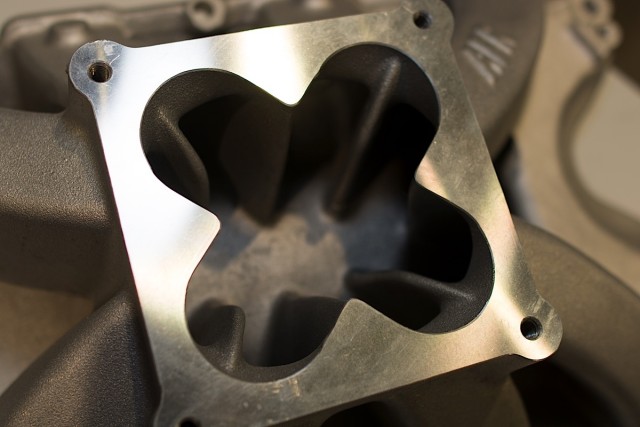
The intake manifold arrives in as-cast condition, but there’s plenty of meat left inside for porting if the customer desires.
The heads that were shipped are the big-dog 300cc versions of the Bullitt, complete with the .250-inch raised exhaust port. The plan was to test the cylinder head in the same type of conditions that AFR uses for its own internal testing to validate the performance claims they make.
During the conversation with Torrecarion regarding the test results, we could sense anticipation regarding what we learned on the bench, but once we informed him of the head’s performance on our bench, you could almost hear the smile break across his face over the phone.
Conditions included testing the cylinder head at the standard 28 inches of water. We tested the head at .100-inch increments from .100-inch through .900-inch and found our numbers to be a bit better than those claimed by AFR on the intake side, and about equal for the exhaust. We tested the heads with radiused clay on the intake port for that portion of the testing.
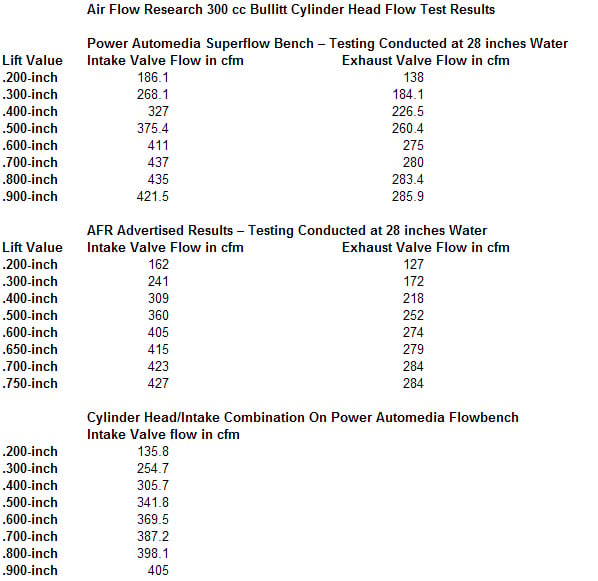
AFR designed the 300cc heads for a maximum .750-inch of lift, but for testing purposes we decided to go up to .900-inch. As you can see from our data, maximum flow was obtained at .700-inch and .800-inch of lift measuring in at 437 cfm, then tapered off at .900-inch lift.
One place where our testing process differed was during exhaust port testing; we did not have the 2 1/8-inch pipe on-hand, and were forced to make do with a buildup of clay around the exhaust port. Even so, our figures didn’t vary much from AFR’s and were in fact better in a few areas.
“We did a lot of design work in an effort to equalize the flow through each port,” says Torrecarion.
Measuring cylinder head flow characteristics is definitely an important part of the overall performance equation, although it’s not the be-all, end-all of performance. Using the bench results for reference during the planning stages of an engine build help the builder to determine whether a particular cylinder head is up to the task of what will be required of the engine they are installed on.
(Left) Intake ports were tested with radiused clay entry. (Right) We were impressed that cylinder head flow did not suffer much at all even when sucking through the unported intake manifold.
In Conclusion
The big-block Ford market has been yearning for a product such as the new Bullitt cylinder heads from Air Flow Research. To date, there have only been a few choices for an enthusiast to pick from – factory heads, a few aftermarket offerings based around the SCJ architecture, and full-on race-style heads that require expensive valve train components.
These Bullitt heads are a clean-sheet design that aim to satisfy the needs of 429/460 lovers everywhere. Since they’re capable of using OEM and aftermarket accessories like rocker arms, valve covers, and exhaust pieces, the enthusiast now has another option when it comes to big-time Ford performance.



